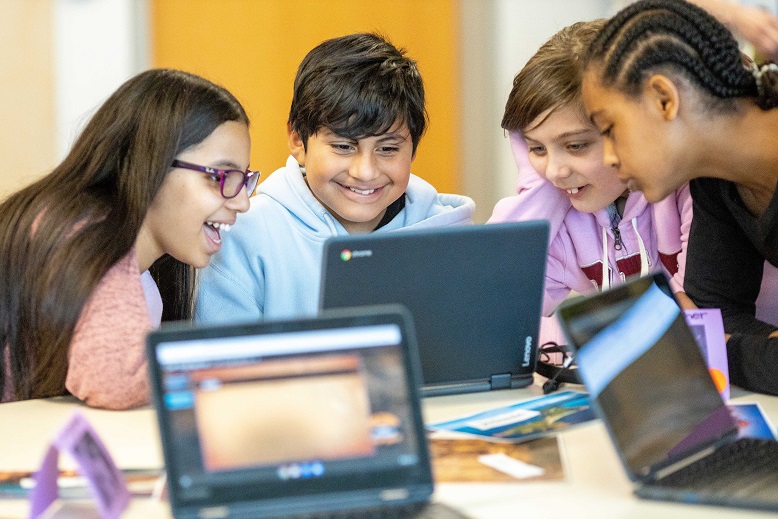
Challenger Center: A Mission to Engage Every Student in STEM
Challenger Center arose in the wake of a terrible tragedy, the Space Shuttle Challenger disaster in which all 7 crew members lost their lives. The families left behind wanted to honor their mission and memory by inspiring youth to pursue STEM education and careers. The result was Challenger Center, which offers space and STEM programs for young people, not only in classrooms across the United States but on a global scale with an entire network of Challenger Learning Centers.
It is critical in our high tech world to make STEM studies attractive to students, so that one day, they might choose to enter STEM-related professions. That can only happen by offering them fun yet challenging opportunities in STEM: something kids would otherwise not have in the classroom. Challenger Center, our latest small grant recipient is doing just that.
We put some questions to Challenger Center Vice President of Development, Partnerships, and Strategy Valerie Fitton-Kane, to learn more about this work:
Kars4Kids: In the Challenger Center blog post, “Inspiring Students Who are Often Forgotten,” you talk about nontraditional learners and kids who sometimes fall through the cracks within the juvenile justice system. Can you share more about why inspiring these students is important?
Valerie Fitton-Kane: Challenger Center’s mission is to engage every student in STEM, inspiring them to envision new possibilities for their future. Students usually participate in our unique, simulation-based programs as part of a school group, including students from many backgrounds: urban, suburban, or rural communities; high-income or low-income families; different races; different genders; different abilities; and/or different life experiences. We collaborate with Challenger Learning Center informal educators and other experts to design our programs for the broadest set of students. We work hard to eliminate barriers to participation.
One of the things we pride ourselves on is the fact that most Challenger Learning Centers are located in underserved communities with many underrepresented students. After 37 years of operating in such communities, we regularly encounter alumni who tell us that their Challenger Learning Center experience shaped their life. We are thrilled by these stories and want to keep reaching more students who otherwise wouldn’t get these types of STEM opportunities.
Kars4Kids: What is the connection between the Challenger shuttle and the work you do at Challenger Center?
Valerie Fitton-Kane: The Challenger STS 51-L mission was unique. NASA held a national competition to appoint the very first Teacher in Space: Christa McAuliffe was selected; Barbara Morgan was her backup. In addition to a teacher, the crew was highly diverse – two female astronauts (Christa McAuliffe, Dr. Judith Resnick), one Jewish astronaut (Dr. Judith Resnick), one African American astronaut (Dr. Ronald McNair), and the first Asian American astronaut (Ellison Onizuka). The plan was for the crew to film Christa as she conducted science experiments in space to inspire student interest in math, science, and space exploration. The videos would be shared with students around the world. Dr. June Scobee Rodgers, who was the wife of 51-L Commander Dick Scobee, was a science educator. She helped Christa prepare for the mission.
In the aftermath of the Challenger shuttle accident in 1986, the crew’s families came together, firmly committed to the belief that they must carry on the spirit of their loved ones by continuing the crew’s educational mission. The White House and NASA were very supportive of the effort, and within a couple of years, the first Challenger Learning Center was built. The team, led by Dr. Scobee Rodgers, thought there would only be one Challenger Learning Center; today there are 35. All Centers are committed to serving the broadest set of students, helping to promote diversity in STEM, just like the 51-L crew.
Thirty-seven years later, we are still carrying forth the legacy of the Challenger crew. We have used our unique space mission simulations, and in-classroom STEM programs, to inspire and engage over 6 million students. The Challenger families are still involved with Challenger Center—some are members of our Board of Directors, and others sit on our Advisory Council. In 2018, we were especially honored to collaborate with Educator Astronauts Ricky Arnold and Joe Acaba to film Christa’s Lost Lessons in space and share lesson plans with teachers as the 51-L crew had intended to do.
Kars4Kids: How many students and teachers do you serve? Where do you operate?
Valerie Fitton-Kane: Challenger Center serves over 250,000 students annually. We have 35 Challenger Learning Centers, most of which are in the United States. We continue to grow our reach through the establishment of new Challenger Learning Centers across the country and our digital programs which can be used to engage students anywhere in the world.
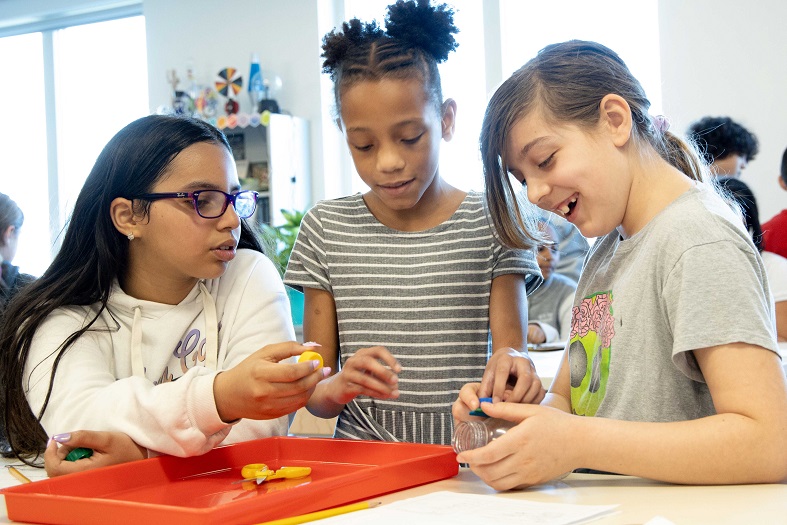
Kars4Kids: What are “Center Missions?” Can you walk us through one of them?
Valerie Fitton-Kane: Center Missions are the most immersive version of our simulation-based programs. Center Missions can only be experienced at one of our 35 Challenger Learning Centers because they occur inside custom, fabricated environments that emulate the interior of a real spacecraft and a real mission control. These environments enable students to fully suspend reality and get into the character of a STEM professional. They conduct experiments, analyze data, and solve problems that space industry professionals encounter in space missions. The whole experience is driven by Challenger Center’s proprietary simulation software that provides information and instructions to students, and enables them to communicate with each other across teams.
We have three core missions – Expedition Mars, Lunar Quest, and Operation Comet – and we are currently developing a fourth, Earth Odyssey. The missions are targeted to students in 5th-8th grade.
To begin, a student group of about 20-30 students is briefed on their specific mission and its goals. Half of the group then goes into Mission Control and half is “transported” to Spacecraft. The group in Mission Control provides instructions to and requests information from Spacecraft. Students in Spacecraft conduct experiments, navigate to space locations, build a probe to collect samples (e.g., moon rocks), conduct experiments, and monitor crew health. There is usually a mid-mission emergency that requires the students in space to return to Earth and problem-solve with their peers in Mission Control. Then, the groups swap places and carry on with their work.
While these are space missions, the experience is more than just a vehicle for teaching space science. Space exploration is a naturally exciting topic for children, and it involves many different STEM skills. Space is so big and complex that no one person can get there and explore alone. So, through a space mission, we can do more than just impart STEM knowledge: We inspire and engage students, introduce them to STEM careers; and help them to develop their STEM identity, sense of self-efficacy, and important 21st-Century skills like communication, critical thinking, and collaborative problem-solving.
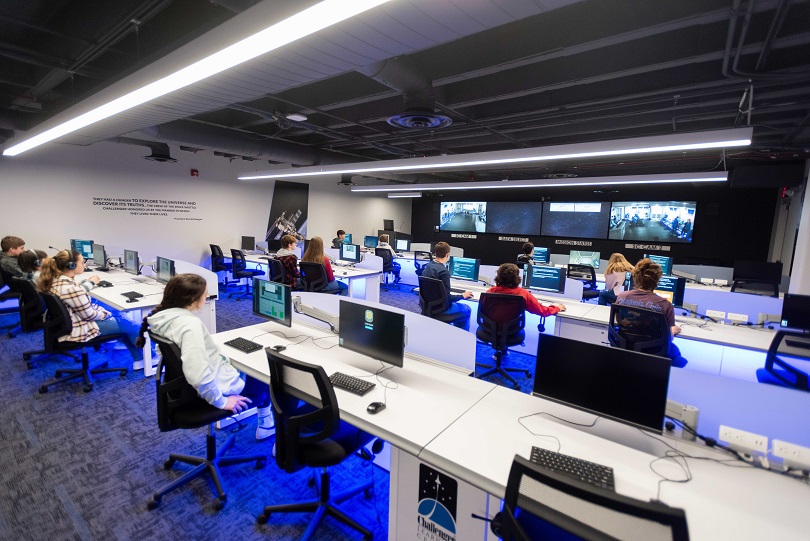
Kars4Kids: We see that Challenger Center provides distance learning activities, including interactive lessons to youth in nontraditional learning environments where there’s sometimes an issue of access to materials for science lab experiments. How do you get around this obstacle? Why is interactive learning important for these students?
Valerie Fitton-Kane: Access to science lab and other STEM equipment is an issue. The equipment is often very expensive and not every educator feels comfortable using STEM equipment, let alone teaching students to use it. This is the advantage of having Challenger Learning Center in underserved communities: All schools can visit a Center and use the equipment in our missions. Our staff are trained to use and maintain the equipment.
For students who cannot get to a Challenger Learning Center, we provide programs that can be delivered via the web or on-site wherever students are gathered. Our strategies for these programs vary. Sometimes Centers have portable equipment, including portable, inflatable planetariums or robotics kits, that can be transported to schools or wherever students are co-located. Or, in many cases, we write programs with extremely flexible materials lists, suggesting supplies that are often freely available or very inexpensive.
Kars4Kids: “Classroom Adventures” sounds so exciting, and it also sounds like an incredible opportunity for the young participants. Can you give us an overview of the program, and describe some of the Adventures for us?
Valerie Fitton-Kane: Classroom Adventures are simulation-based experiences designed to be run in school classrooms, by teachers, for 3rd-5th grade students. They do not require a special, immersive environment; they can be run in any classroom or multi-purpose room. The only requirement is a set of laptops – one for every student and teacher – that can access the internet.
Classroom Adventures was designed for scale. We know that simulation-based education is effective, but prior to Classroom Adventures, we did not have a tool for delivering a simulation experience outside of a Challenger Learning Center. We also know that if we want to inspire more students, we need to enable other educators (beyond just Challenger Learning Centers) to deliver simulation-based experiences. So, Classroom Adventures was developed by former classroom teachers for current classroom teachers, simplifying the delivery of simulation-based programs to a point that literally anyone can do it. As a proof point, I am not an educator at all, and yet I’ve successfully delivered two Classroom Adventures to my son’s 5th grade class this year. If I can do it, anyone can!
One other aspect that differentiates Classroom Adventures is the fact that we leverage other environments as a hook . . . and it works! In Aquatic Investigators, students role-play as marine biologists, ecologists, chemists, and engineers working in an undersea lab to determine why Hawaiian monk seals are missing from their usual home in the Northwestern Hawaiian Islands. They learn about ocean debris, ocean acidification, coral-bleaching, the food chain, and many other ocean science topics as they collaborate to solve the mystery. Nature Rangers covers plant structures and lifecycles as students work with a forester in the Great Smoky Mountains to identify whether a plant is an invasive species, and if so, what to do about it. Finally, in Dirt Decoders, students learn about fossils, weathering, and erosion as they hunt for the skeleton of a ground sloth in the American Southwest.
When we developed these programs, we weren’t sure students would be able to suspend reality in a regular classroom environment. We’ve now run these programs with thousands of students across the U.S., and it works!
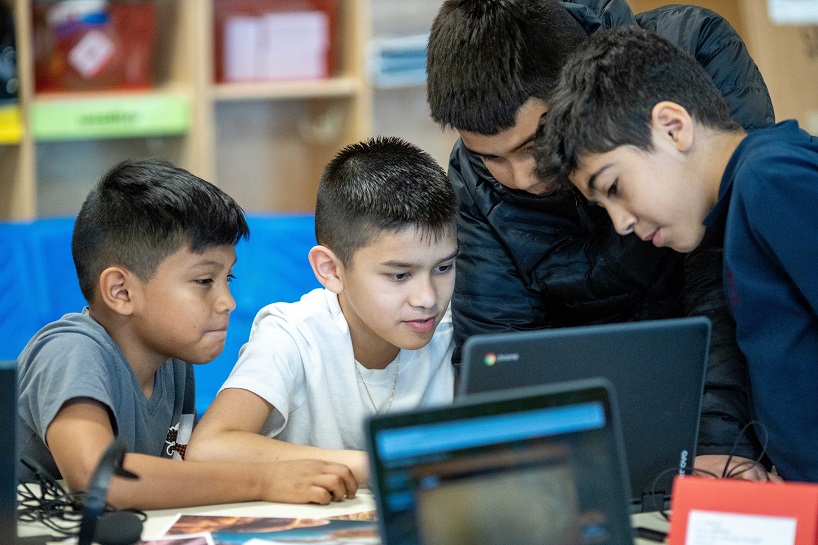
Kars4Kids: Challenger Center also offers “Virtual Missions.” Was this a program born of the pandemic or were you already offering virtual learning opportunities when the pandemic hit? How did the pandemic affect your operations, in general?
Valerie Fitton-Kane: A core aspect of the Challenger Center experience is enabling communication, collaboration, and problem solving among student groups who are working together, in person. But the pandemic made that impossible. All of our Centers closed overnight, and many were at a loss on how to continue engaging students, especially when we knew students were feeling isolated and needed meaningful opportunities to connect with each other.
The first thing we did was consider where Classroom Adventures could be used to engage students while they were schooling from home. Unfortunately, the answer was no. The program was designed for students to work together in person. But, if we had funding and time, we could leverage the internet-based platform upon which Classroom Adventures are developed to make a new version of a Classroom Adventure that was designed specifically for students to collaborate across multiple locations. This idea became Virtual Missions.
To build Virtual Missions, we called upon two of our corporate partners, Northrop Grumman and Blue Origin, and requested resources to help us make this program a reality. They provided funding, subject matter expertise, animations, and other content. We also invested some of our own unrestricted funds in the programs. By early 2021, we released Destination Mars and Destination Moon, two Virtual Missions that have since been delivered to thousands of students worldwide.
Kars4Kids: You have some summer camps coming up, geared toward learning, rather than the usual recreational activities one expects to see at summer camp. We’re sure the parents approve, but what kind of feedback do you get from the campers? Do you have return campers?
Valerie Fitton-Kane: Challenger Learning Center employees know how to make STEM topics fun, and students absolutely want to come to our camps! Centers are highly creative and make entire weeks themed around robotics, Mars, or other exciting topics, enabling students to use tools and materials they may not have access to at home or school. Further, most camps leverage the simulator in each Challenger Learning Center. That is one experience no other camp can provide: a trip to space!
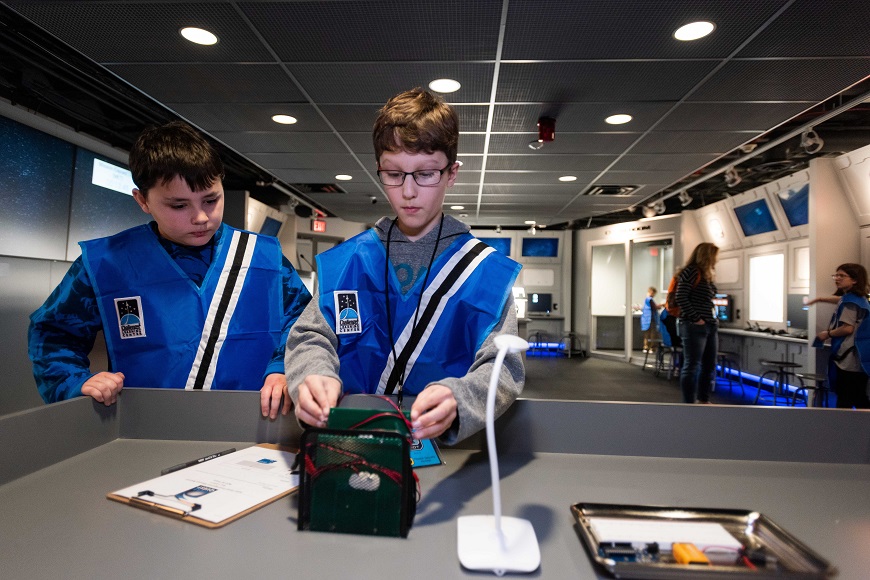
Kars4Kids: The summer camps are for K-12 learners. What is your approach in regard to teaching STEM to very young children? How does the focus of the lessons you offer change, as students grow older?
Valerie Fitton-Kane: We strongly believe that engaging STEM education needs to start when students are young and curious. Many kids start to get clear about their interests and identity in late elementary and middle school. By high school, students are actively making choices that will influence their career path. Right now, about 50 percent of students decide they do not want to pursue STEM education or STEM careers after 8th grade. If the big picture goal is to build a larger, more diverse STEM workforce and STEM literate society, we must ensure more high school students are interested and engaged in STEM. To broaden the pipeline in high school, we must ensure more students stay open and engaged with STEM through elementary and middle school.
Challenger Center’s simulation-based programming is targeted at 3rd-8th grade students. Many of our Centers have created programs for Pre-K to 2nd grade students. These are very simplified, hands-on programs that involve some aspects of simulation, but do not require the higher-level skills needed to really simulate a complete space mission. Third to 8th grade students are developmentally capable of understanding the bigger picture of a simulated mission with many individuals working together on individual tasks that lead to the achievement of a collective goal.
Kars4Kids: What’s next for Challenger Center?
Valerie Fitton-Kane: Challenger Center is very focused on growing its reach and deepening its impact on students. We are building new Challenger Learning Centers and growing the distribution of our Classroom Adventures and Virtual Missions programs. We continue to research the impact of our programs and find new ways to make them accessible to the very diverse students in our society. We continue to drum up new ideas for engaging students of all ages in missions that show them new fields of study (e.g., artificial intelligence) and new challenges (e.g., space debris). We believe what we do is unparalleled, and we hope to inspire millions of students in the years to come.